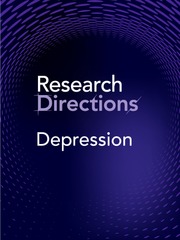Context
A clinical concept that has been taken up with some enthusiasm in mental health services for young people experiencing major mental disorders is that of clinical staging, with the emphasis on identifying and intervening in youth with various ‘at-risk’, ‘sub-threshold’ or ‘attenuated’ syndromes, before the onset of first major episodes (Shah et al Reference Shah, Scott, McGorry, Cross, Keshavan, Nelson, Wood, Marwaha, Yung, Scott, Öngür, Conus, Henry and Hickie2020). While these concepts were initially developed within the rather focused context of major psychotic disorders, they are now being deployed much more widely and applied to young people presenting with a variety of mental disorders (Hickie et al Reference Hickie, Scott, Cross, Iorfino, Davenport, Guastella, Naismith, Carpenter, Rohleder, Crouse, Hermens, Koethe, Markus Leweke, Tickell, Sawrikar and Scott2019; Shah Reference Shah2019).
These approaches include various mixes of anxiety, depressive and other mood symptoms as the common and earliest clinical stages, and emphasize conceptually both optimal early treatment and secondary prevention strategies. However most work has been done on mapping trajectories to a very narrow set of illness (e.g., psychosis, bipolar disorder) or functional (role impairment) outcomes (Iorfino et al Reference Iorfino, Scott, Carpenter, Cross, Hermens, Killedar, Nichles, Zmicerevska, White, Guastella, Scott, McGorry and Hickie2019; Capon et al Reference Capon, Hickie, Varidel, Prodan, Crouse, Carpenter, Cross, Nichles, Zmicerevska, Guastella, Scott, Scott, Shah and Iorfino2022), and on evaluating specific interventions focused on prevention of progression to those less common (and more discrete) disorders. By contrast, less work has been done on differentiating adolescent-onset mood and anxiety disorders that are deserving of clinical interventions from earlier childhood risk states (e.g., childhood neurodevelopmental disorders, anxiety disorders).
While these frameworks have been praised for broadening the scope of young people who should have access to treatment, concerns have also been expressed that these illness staging models promote clinical care and active interventions prematurely to adolescents who do not have a current need for health care or are at very low risk of progression to any enduring illness or disability. Additionally, these critiques raise the concern of risk of iatrogenic harm through exposure to stigma or discrimination or the adverse effects of specific pharmacological or psychological therapies. Clearly documenting the benefit to risk ratios for specific interventions delivered in the early stages of major mood and anxiety disorders is, therefore, a high research priority.
While the outcome states of psychosis or mania may be clear and appropriate full-threshold, first episode states, it is far less clear what would constitute the equivalent states for major anxiety, depressive, other mood, or comorbid disorders? Can all these disorders simply be combined in a transdiagnostic, clinical staging model? Or, are anxiety and depressive disorders best dealt with separately, with a fundamentally different approach to the goals of early identification of, and provision of specific clinical interventions for, those at high risk of progression to chronic or persistent illness, comorbidity or functional impairment.
How to contribute to this question
If you believe you can contribute to answering this Question with your research outputs find out how to submit in the Instructions for authors (https://www.cambridge.org/core/journals/research-directions-depression/information/author-instructions/preparing-your-materials). This journal publishes Results, Analyses, Impact papers and additional content such as preprints and ‘grey literature’. Questions will be closed when the editors agree that enough has been published to answer the Question so before submitting, check if this is still an active Question. If it is closed, another relevant Question may be currently open, so do review all the open Questions in your field. For any further queries check the information pages (https://www.cambridge.org/core/journals/research-directions-depression/information) or contact this email ([email protected]).
Competing interests
Ian Hickie is the Co-Director, Health and Policy at the Brain and Mind Centre (BMC) University of Sydney. The BMC operates an early-intervention youth services at Camperdown under contract to headspace. He is the Chief Scientific Advisor to, and a 3.2% equity shareholder in, InnoWell Pty Ltd which aims to transform mental health services through the use of innovative technologies.





